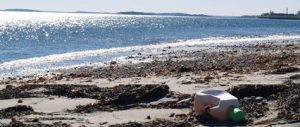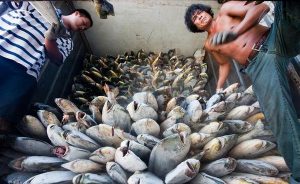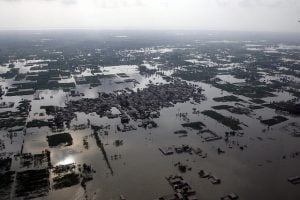The abundance of coral in China’s southwest coastal coral reefs has fallen by 80% over the past 30 years, according to a joint Chinese and Australian study, with the fall accelerating in more recent years.
Coral reefs are formed on the skeletal structure and remains of previous corals, a process that takes tens of thousands of years. They are a key habitats for marine life and home to a quarter of all fish species.
The joint research, between the South China Sea Institute of China and Australia’s Centre of Excellence for Coral Reef Studies, was published in the Journal for Conservation Biology and points the blame at water pollution, coastal development, overfishing and destructive fishing practices.
The emission of domestic and industrial wastewater has polluted the area and resulted in large scale coral death, and thereby greatly diminishing the number of coral reef habitats.
According to researcher Huang of the South China Sea Institute of China, coral reefs are predominantly made of calcium carbonate; damage to many shallow water coral reefs comes from the extraction of reef to be used in burning lime.
In addition, the development of human activities in coastal waters such as sightseeing and diving has increased the number of people trampling on coral itself and causing damage. The most harmful damage comes from the development of man-made constructions and sewage disposal plants.
Some island reefs in the South China Sea are military outposts for six countries in the region including China. Airport runways, harbours and other military facilities have been built on the islands, strongly undermining the survival of coral reef habitats. The increasing frequency with which fishermen are going out to sea is also an important factor in species decline.
Sanya, in Hainan, is a typical example of population growth and economic development having a serious negative impact on coral reefs.
In 1950, Sanya was a tiny fishing village with a population of 2,000, by 2010, it had been transformed into an international tourist attraction with a population of more than 600,000, in 2009 alone there were over six million visitors to the city.
As Sanya expanded to accommodate more tourists, with more hotels and artificial islands it discharged even more sewage and industrial waste water, not to mention the increase in fishing. The Sino-Australian research article found that the current coral cover surrounding Sanya is already almost completely gone.
Once the corals have died the original ecological structure of the area changes rapidly. In the South China Sea region, the areas which have lost their coral population have experienced a rapid growth in all sorts of algae, accompanied by outbreaks of starfish or sea urchins. Coastal waters have experienced a decrease in all organisms because of the water pollution and ecological destruction.
Researcher Huang states that although in the past there were national coral reef protection areas, they were all eventually given-up in the name of economic growth.
Translated by Tanya Mayo-Bruinsma




